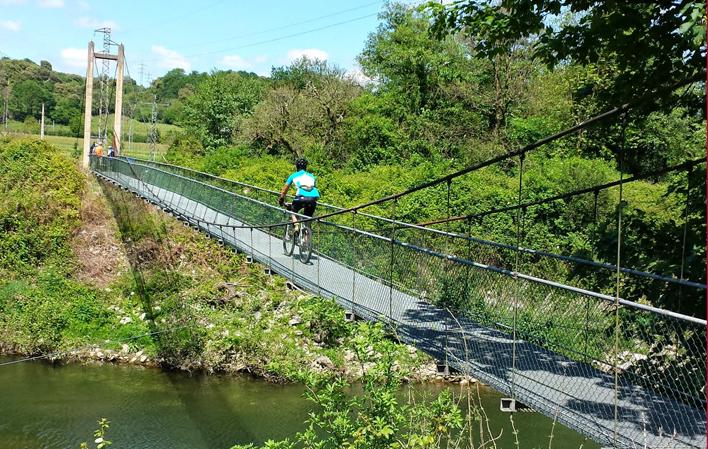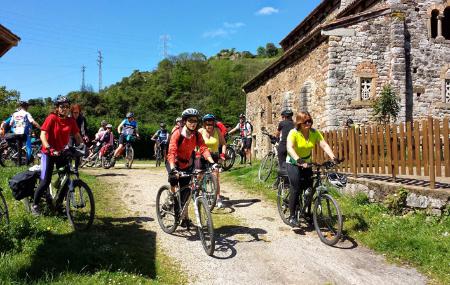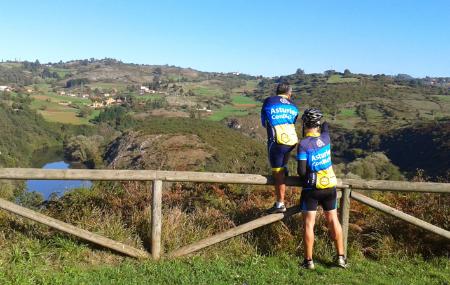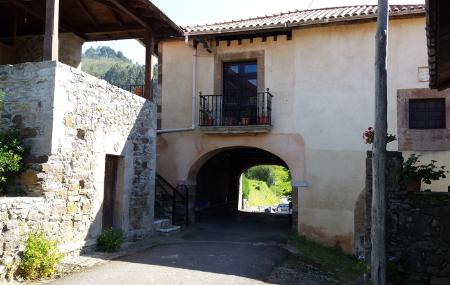
Priañes to Quinzanas Palace
- Address Oviedo, Las Regueras, Grado and Pravia Asturias Centre
- Distance Distance: 47,6 kms
- Difficulty Difficulty: High
- Mountain bike Mountain bike: 1 day
- Start point Start point: Oviedo
- Route type Route type: mtb
- Tour type Tour type: Linear
- Layout of the route Layout of the route: Download kml
Route
Oviedo - Pravia 47,59
This excursion is a bit of a "leg-breaker", as there are continuous climbs and descents. It runs through urban areas, secondary roads, some stretches of main road, which will force us to take extreme caution, and the occasional stretch of track that makes it unsuitable for road bikes.
The route starts in Oviedo in the district of La Florida and then crosses villages such as San Lázaro de Paniceres, Villamar, San Claudio, La Cabaña, Las Heras, Otaruelo and the chapel of Pedreo.
From this point until San Pedro de Nora it is a downhill section: you have to be careful, as there are parts of the track in bad condition, and due to its steepness it is recommended that you walk down if you are not confident or have the necessary skills for this type of descent.
Once in San Pedro de Nora you can visit the parish church belonging to the Asturian pre-Romanesque style, which was burnt down and destroyed during the Spanish Civil War and later rebuilt.
After the visit, head towards Priañes along a local road for just over a kilometre of manageable ascent. Another alternative is to take the Priañes path that leads to the village itself, although it has steeper climbs. And just before setting off, from the side of the San Pedro de Nora reservoir you can see the remains of an old Roman bridge.
Once in the village of Priañes you can stop to contemplate, from a viewpoint, a hydrogeological formation of notable singularity and rarity caused by the arrival of the river Nora and its union with the river Nalón: the meanders of the Nora.
In this village the route joins the Priañes Greenway, which leads to the river Nalón and then follows its banks to the Priañes reservoir, where the river is crossed by a suspension bridge. The excursion continues through Barredo and then Llera, and after a brief passage along the N-634, you enter the village of Valduno.
In Valduno you can stop to see the church of Santa Eulalia and the remains of the Roman baths annexed to it. But if this town is known for anything, it is for the Valduna chestnut, a local variety that stands out for its sweeter flavour, its large size, its reddish colour with veins and its shine. And what better way to enjoy these chestnuts than at an amagüestu: a traditional celebration in which sweet cider is drunk with chestnuts, which usually takes place during the month of November and is celebrated practically all over Asturias.
From Valduno to Grado, the route follows the Camino de Santiago, passing through villages such as Paladín, Puerma and Peñaflor, which is reached via its famous bridge.
Grado is a good place to recharge your batteries, as from here you should head towards Sandiche on the AS-237 main road and then continue on local roads to San Tirso (passing through Aces beforehand) where you should take the AS-39 to reach another point of interest on the route: the Palace of the Francos in the village of Quinzanas. This palace, rectangular in shape with an added body forming an angle on the left side and with a passageway, has a curious history: in the past, the road that used to pass through here, linking the municipalities of Pravia and Candado, had to cross its walls, making it impossible for vehicles of a certain size to use it and forcing them to make a detour.
The route continues and after a short stretch of road, we take a path along the banks of the Narcea River (passing by the point where it flows into the Nalón River, near Forcinas). On this path we must take extreme caution, as sudden braking or a fall can end up with our bones in the water. There are also some stairs that must be descended on foot.
Finally, along farm tracks, we reach Pravia, the final destination of this route.
Map
Itinerary
Oviedo - San Claudio - San Pedro de Nora - Priañes - Valduno - Peñaflor - Grado - Sandiche - Quinzanas - Pravia




